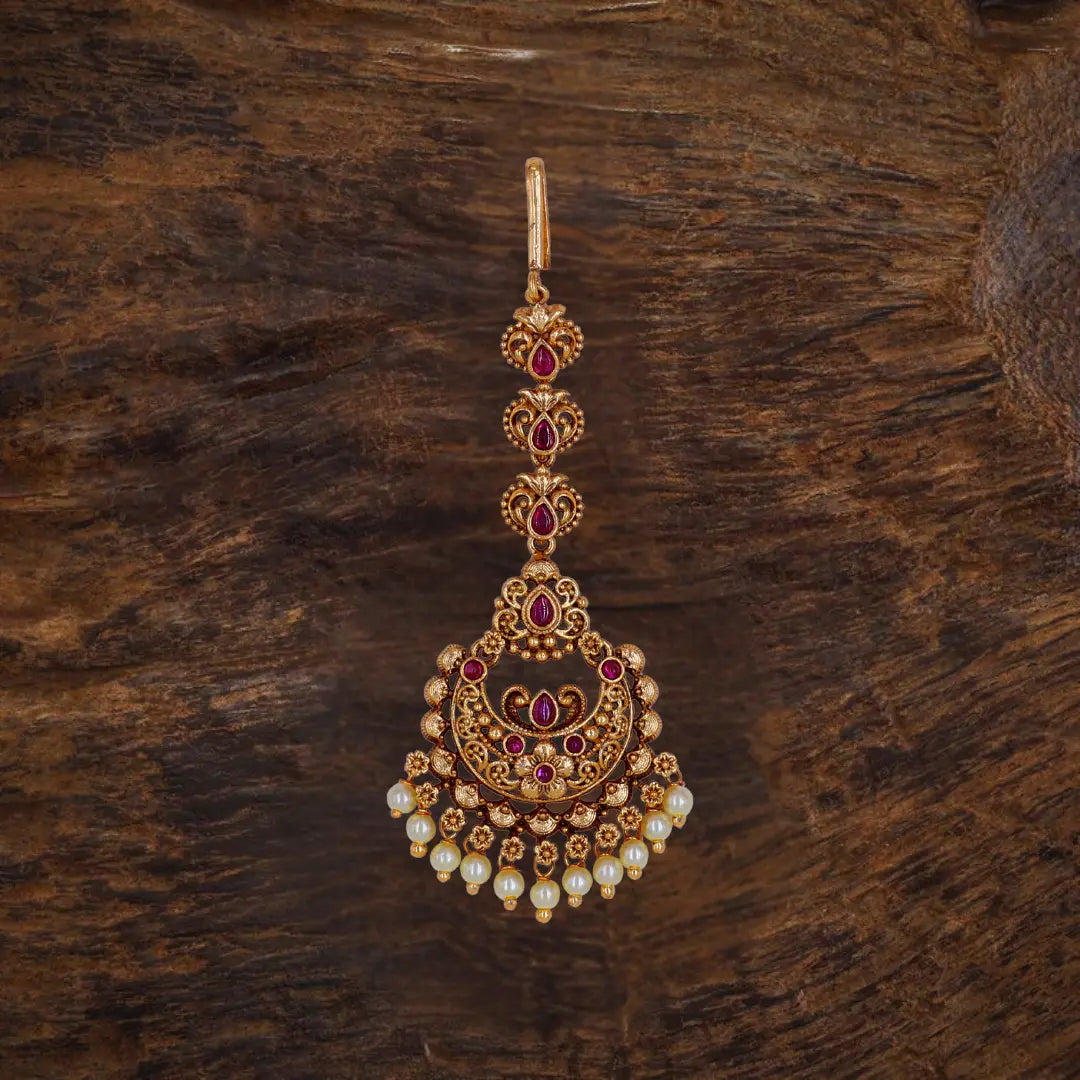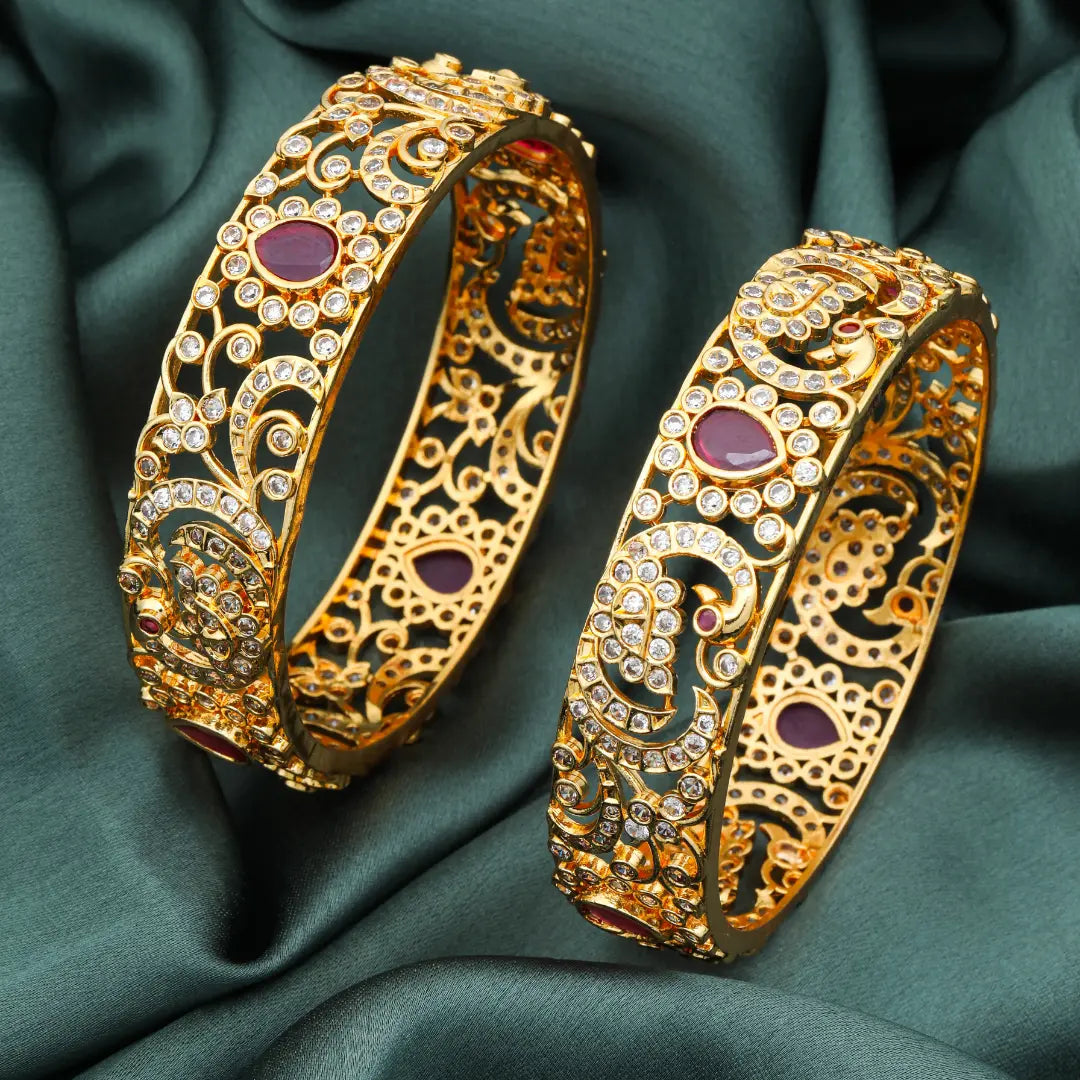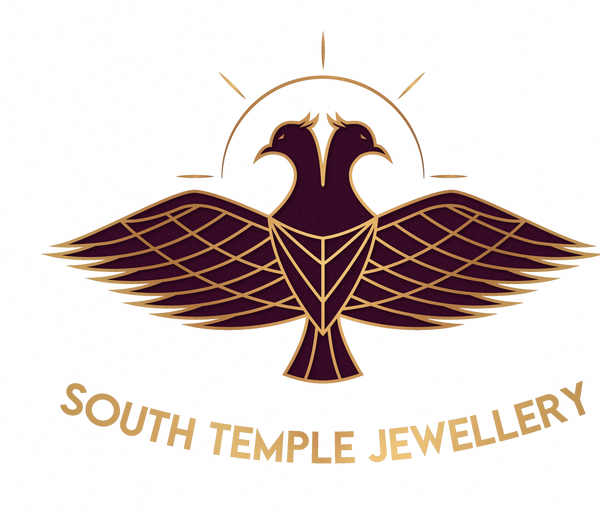Maang Tikka Through the Ages: Transformation of Bridal Ornaments in India

The maang tikka, a beautiful ornament worn on the bride’s forehead, has been a vital component of Indian bridal jewelry for centuries. This iconic piece has transformed in design, style, and cultural importance, reflecting the rich legacy of Indian craftsmanship. For South Indian brides, the impact of temple jewelry has been especially significant, showcasing intricate artistry and divine themes. Let’s explore the progression of the maang tika and its lasting allure in South Indian temple jewelry.
1. Ancient Beginnings
The roots of the maang tikka can be traced back to ancient India, where jewelry was not just decorative but held profound spiritual and cultural significance. Temple jewelry, crafted during the Chola, Pandya, and Vijayanagara dynasties, was initially intended for adorning deities in temples. Over time, these divine designs were adapted for bridal use, with maang tikkas symbolizing the union of two souls and divine blessings.
2. Significance and Spirituality
In traditional Indian culture, the maang tikka is worn at the center parting of the hair, where the Ajna Chakra (third eye) is believed to lie. This placement is thought to enhance intuition and spiritual connection. For South Indian brides, temple jewelry maang tikkas often showcase sacred motifs such as:
-
Goddess Lakshmi: Symbolizing wealth and prosperity.
-
Peacocks and Lotus Flowers: Representing beauty, grace, and purity.
-
Kalash Designs: Indicating abundance and auspiciousness.
3. Medieval Grace
During the medieval era, temple jewelry flourished under royal patronage. Goldsmiths created intricate maang tikkas adorned with rubies, emeralds, pearls, and uncut diamonds. These pieces became symbols of status, worn by queens and noblewomen during weddings and festivals. South Indian temple jewelry maintained its unique aesthetic, emphasizing intricate carvings and bold designs.
4. Colonial Impact
The colonial period brought changes to Indian jewelry-making practices. While the focus on traditional designs continued, new techniques and materials, such as filigree work and semi-precious stones, began to influence temple jewelry. Despite these changes, the essence of the maang tika as a bridal ornament remained unchanged, continuing to symbolize heritage and sanctity.
5. Modern Trends
Today, the maang tikka has adapted to accommodate diverse bridal tastes while remaining true to its traditional origins. South Indian temple jewelry brands have reimagined this timeless piece with:
-
Contemporary Minimalism: Sleeker, lightweight designs for brides desiring understated elegance.
-
Fusion Styles: Merging temple jewelry motifs with modern aesthetics to appeal to global audiences.
-
Versatility: Designs that can be worn as independent pieces or paired with matha pattis for a layered appearance.
Popular dulhan maang tika gold designs and latest design maang tika options often combine traditional craftsmanship with a maang tika new style, making them ideal for modern brides.
6. Maang Tikas in South Indian Marriages
In South Indian weddings, the maang tikka—often referred to as "nethi chutti"—is a central component of the bridal attire. Temple jewelry brands craft these pieces to harmonize with traditional Kanjeevaram sarees, featuring motifs that reflect the saree’s zari work. Common aspects include:
-
Chandbali Tikkas: Crescent-shaped designs that radiate regal charm.
-
Layered Maang Tikas: Featuring cascading chains for a more luxurious appearance.
-
Single-Stone Sophistication: Showcasing a single gemstone surrounded by intricate goldwork.
7. Preservation of Heritage
South Indian temple jewellery brands play an essential role in maintaining the legacy of Antique maang tikkas. By merging age-old craftsmanship with contemporary sensibilities, they ensure this bridal ornament remains significant across generations. Handcrafted pieces made with authentic materials, such as 22k gold and genuine gemstones, continue to uphold the legacy of this art form. Many brands now offer gold maang tikka designs for bride, blending tradition with innovation.
The maang tika’s evolution through the ages reflects the rich fabric of Indian culture and the enduring charm of South Indian temple jewelry. Whether it’s a bride’s initial step into married life or a tribute to her ancestral roots, the maang tika remains a treasured emblem of beauty, spirituality, and tradition. As temple jewelry continues to evolve, it ensures that the maang tika’s legacy.

